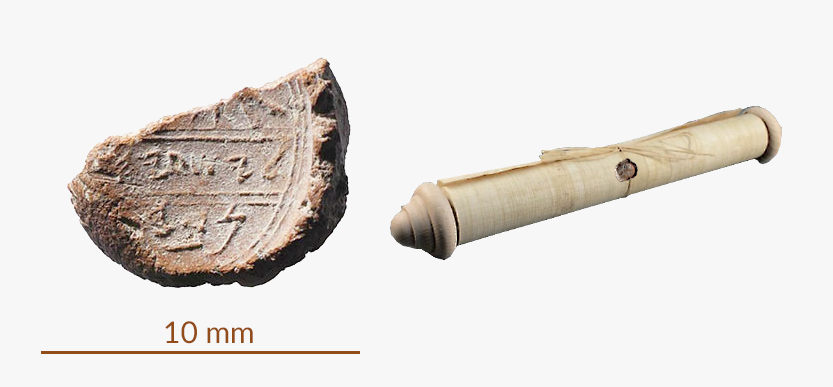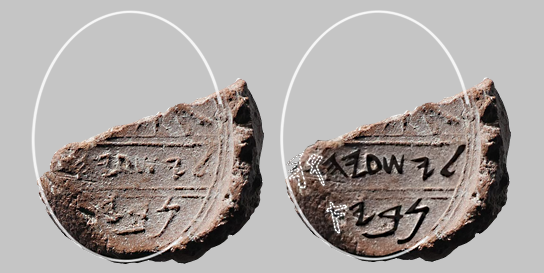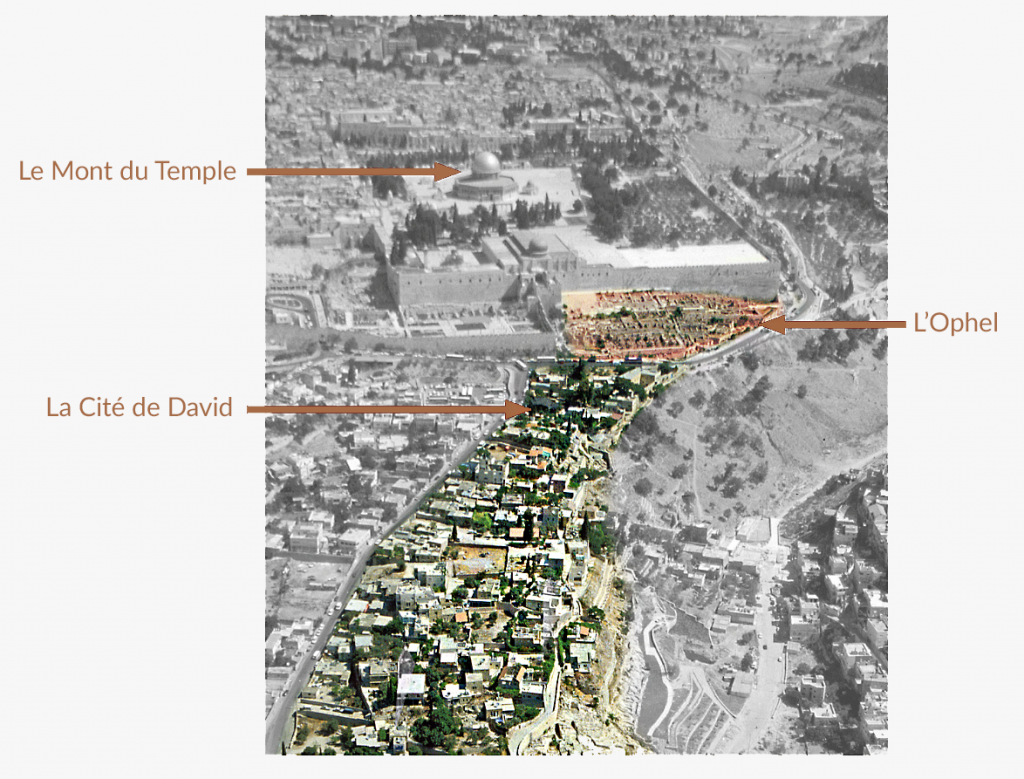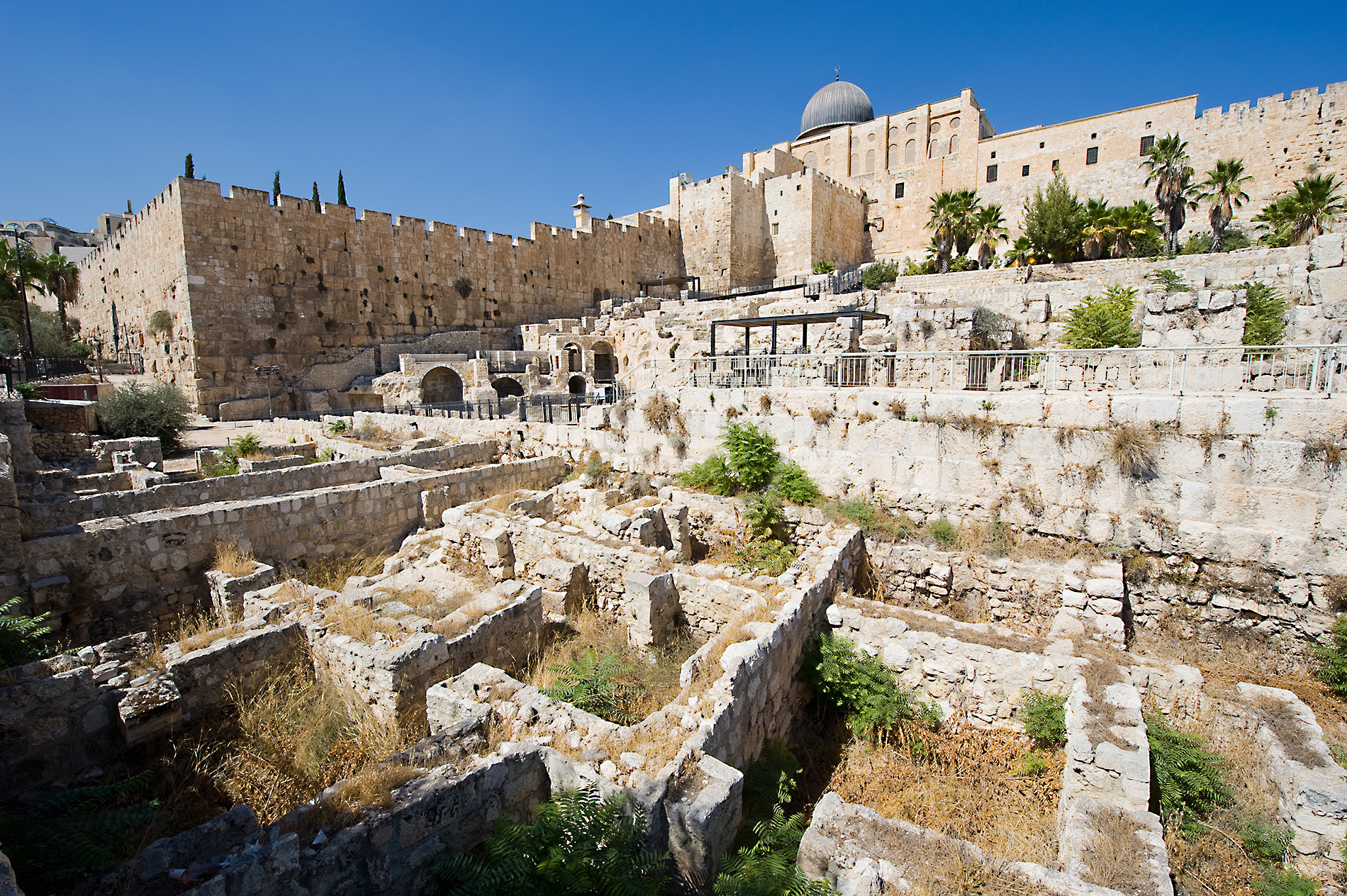
Bible, History, Archaeology
Bible,
History,
Archaeology
A seal of the prophet Isaiah?
A bulla, imprinted with a clay seal, may be the first archaeological evidence of the existence of the prophet Isaiah (or Ésaïe), although a missing letter leaves some doubt.
The discovery
According to Dr Eilat Mazar of the Hebrew University of Jerusalem, who was in charge of the excavations, this seal imprint, dating from the 8th century BC, was found in the Ophel ruins a fortified area in ancient times, located between the Temple Mount and the City of David: «It looks like we may have discovered a seal imprint that may have belonged to the prophet Isaiah.» she revealed in a press release.
The bubble was uncovered in 2009, along with several artifacts, bubbles, figurines, some thirty seals and the’an imprint of a seal belonging to King Hezekiah. It was made by the same seal as other Hezekiah bullae that have previously appeared on the antiquities market, confirming their authenticity.
Image opposite: Isaiah's seal. and an example of a seal affixed to a document. Ouria Tadmor © Eilat Mazar.
The ruins and the various artifacts have been conclusively dated to the First Temple period (in archaeological terms, Iron Age II). We can therefore accept that this so-called Isaiah seal imprint dates from between the ninth and seventh centuries BC.
The prophet Isaiah is said to have lived in the eighth century BC.

A significant part of the upper area (the first register) is missing, and the lower left side is damaged, probably due to a finger crushing the soft clay when the seal was shaped some 2,700 years ago (fingerprints can still be seen).
Image opposite: from left to right: the impression drawing, the impression and the back of the seal impression.
Ouria Tadmor © Eilat Mazar.
The fact that part of the bulla is damaged makes deciphering it a challenge. However, despite the damage, the surviving text is in excellent condition and easy to read.
The first register
It's important to note that the missing section of the bulla (the top part) contains no text. Instead, it was common for ancient seals to engrave symbols or images. Hezekiah's bulla, for example, featured the engraving of a sun with its wings turned downwards. Dr. Mazar believes that «the motif of this seal should be a grazing hind, symbolizing prosperity». (Interestingly, this kind of description is mentioned in the Book of Isaiah (Isaiah 11, 6; 13, 14 and 35, 6).
The second and third registers
The most interesting part of the bulla - the text identifying its owner - is engraved on the second and third registers. The text on the second register is easy to read and clearly indicates, Yesha'yah[?]. Although a letter is missing on the left side (Hebrew is written from right to left), there is only one logical option for its identity. For it to be a name, it must be a «w/or» (vav in Hebrew). With the «or»necessary, this is undoubtedly the Hebrew name Yesha'yah[or] - or Isaiah.
Now comes the important question: is this the prophet Isaiah?
Hypotheses about the missing text
The Scriptures mention seven individuals named Isaiah, and other men named Isaiah undoubtedly lived in the ancient kingdom of Judah. The use of a seal at that time (late 8th century BC) does not seem exceptional, and was even developed in the royal administration.
Much of the problem of reading the bulla revolves around its damaged left side, and specifically the inscription of the third register. It's impossible to know for sure whether the third register is incomplete.
There's a clear border around the outer edge of the bubble. The text and motif are positioned inside this border. There is no border on the left side of the bubble, due to the damage. If we imagine the existing border continuing around the entire outer edge, we can visualize where the assumed border would be. Eilat Mazar proposes that on the left side of the bubble, between the last letter and the imaginary border line, there would have been ample space on the second register for at least two more letters, as well as on the third register for at least one letter.
Image opposite: with the hypothesis of the supposedly missing letters, according to Eilat Mazar. Reut Livyatan Ben-Arie/Eilat Mazar.
We remind you that the missing letter on the second register is a «or»And with this letter we have the Hebrew name for Isaiah. But there would be enough space for a second letter. In fact, if the space between the letters on the second register was equal (as one would expect), then it would be plausible that another letter was missing. Perhaps it was «heh»the Hebrew letter for «the»?
But what about the missing text in the third register? Do we know which letters might have occupied this space?
Now consider the three letters that are present and can be easily deciphered. These are the letters nun, bet and yod ; together they form nby.
Professor Shmuel Ahituv has studied the seal and suggests that nby could be a nickname, or may refer to a resident of an ancient region of Judea or the city of Nob.
If the second word is a name or nickname (perhaps with a letter added), as Shmuel Ahituv suggests, this inscription does not identify the owner's function or title. This would be unusual. Eilat Mazar suggests that the most likely and natural option for the missing letter is a aleph (‘). Adding a aleph on the bottom line would produce nby’ - the Hebrew word for «prophet».
That's why, for Eilat Mazar, nby’ is the most likely explanation for the incomplete word on Isaiah's bulla.
If the missing letter on the third line was a aleph, the inscription on the bulla would clearly read, «Isaiah, prophet». If the Hebrew letter «heh»If «Isaiah the prophet» were engraved on the second line, the bulla would read, «Isaiah the prophet". Other bullae discovered in the same archaeological period show that there is a precedent for the inscription existing with or without the specific article "the».
Disagreements over interpretation

Image opposite: plan of the southern Temple Mount today, with the Ophel and the City of David.
Zev Radovan. BibleLandImages.
Epigraphist André Lemaire, Director of Studies at the École Pratique des Hautes Études, also raises an objection to the interpretation of this seal impression: «This attempted identification does, however, pose epigraphic problems, as it is linked to a double restitution in the missing part. Along with Professor Shmuel Ahituv, I remain more than reserved about this identification, as there is a simpler way of understanding this inscription as a «Yesha'yahu/Isaiah [de] Nob».
To date, at least five other examples of seals, bullae or stamps with the name nby, probably originally from Nob. Nby does exist as a proper noun in contemporary Hebrew. It is also attested in the ketiv (vocalized nwby) in Nehemiah 10:20.
Having said that, the discovery of some thirty bullae, including one mentioning King Hezekiah, is still very interesting for the use of writing in royal administration at the time of King Hezekiah, i.e. around 700 BC».
The ruins of Ophel today. Ophel is a hill south of the Temple Mount in Jerusalem. It is notably occupied by the ruins of the city of David. In anticipation of a siege by the Assyrian army, King Hezekiah had a tunnel-canal dug into the rock, over five hundred meters long, and a cistern called the Pool of Silwan (or «Pool of Siloam») to ensure the water supply. © Robert Hoetink 243533794.
Historical background
The Old Testament provides an in-depth account of the history of the kingdom of Judah after the death of King Solomon in the second half of the 10th century B.C. This period of history is marked by revolts, social degradation and religious confusion.
King Hezekiah (c. 726-697 B.C.) was one of the exceptions among successive rulers. Hezekiah inherited the throne of Judah when he was 25 and reigned for 29 years. The Bible records that he set about reforming the kingdom from the day he acceded to the throne: in a surprisingly short period, he essentially succeeded in centralizing official worship in the Jerusalem Temple by doing away with the local or «provincial» shrines conventionally called «high places» which featured a stele, an altar and a «sacred tree».
All these stories can be read in 2 Kings 18 à 20 ; 2 Chronicles 29 to 32, and the book of’Isaiah.
In 2 Kings 18, 5. It is said that King Hezekiah «put his trust in the Lord, the God of Israel; and of all the kings of Judah who came after him or before him, there was none like him.».
This historical context is important to remember because the biblical passages reporting on the actions of King Hezekiah show that Isaiah the prophet played a crucial role.
There are 15 occurrences in the Old Testament where the names Hezekiah and Isaiah are mentioned in the same verse.
Isaiah is considered one of the four great prophets, along with Jeremiah, Ezekiel and Daniel, due to the length of their books. The first part of the Book, which is attributed to Isaiah, spans four kings of Judah, Uzziah, Jotham, Ahaz and Hezekiah, essentially in the second half of the 8th century.
The oldest known version of Book of Isaiah is part of the Dead Sea Scrolls, of which it is one of the most important.
Apart from King David and the prophet Nathan, this is the closest king-prophet relationship in the entire Old Testament. Whenever King Hezekiah faced a crisis or needed advice, he turned to Isaiah. And the prophet guided King Hezekiah - and all the people of Judah - through the difficulties they faced.

